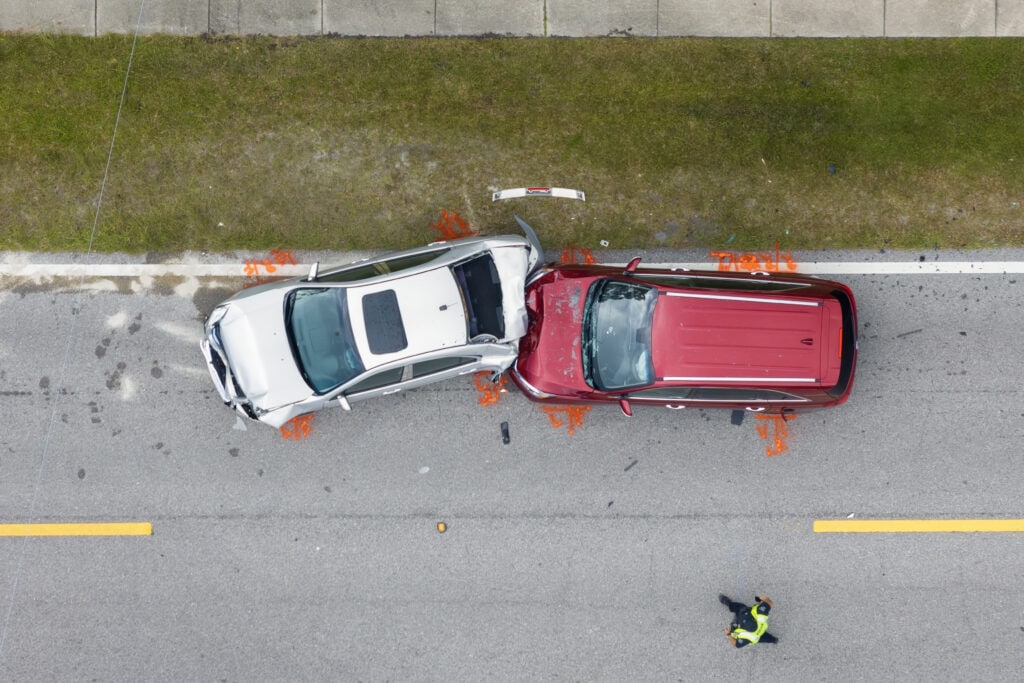If your car is damaged in an accident or by something unexpected, like a falling tree or a deer running across the road, knowing what your auto insurance covers can make all the difference. Many drivers have heard the terms comprehensive and collision coverage, but are not always sure what they mean or when they apply. Let’s dive into the differences between comprehensive and collision coverage to see what each covers.
What is collision coverage?
Collision coverage helps repair or replace your vehicle if it is damaged in a crash, whether you’re at fault or not. This type of coverage pays for damage when your car hits another vehicle, a tree, a guardrail, or even a mailbox. If your car is damaged in an accident involving another object or driver, collision insurance helps protect your vehicle.
Here’s a typical example: You accidentally back into a pole in a parking lot. The damage to your bumper is not covered by liability insurance. However, collision coverage pays for damage to your own car.
Even if the accident involves another driver, collision coverage can cover damage to your car regardless of fault, after you pay your deductible. It also applies if you’re hit by a driver without insurance. Whether you lease, finance, or own your vehicle outright, collision coverage helps cover damage caused by accidents.
What is comprehensive coverage?
Comprehensive insurance covers non-collision-related events. These are things outside your control, such as natural disasters, vandalism, theft, or hitting an animal.
Example: A tree branch falls on your parked car during a storm, shattering your windshield. You were not driving, and there was no collision. That is a classic case where comprehensive insurance covers the repairs.
Here are a few more situations where comprehensive coverage applies:
- Your car is stolen
- Hail dents the roof
- You hit a deer at night
- A fire damages your parked vehicle
If it is not a collision but your car is damaged, comprehensive insurance covers the loss. This type of coverage is designed to protect your vehicle from unpredictable events.
Quick Comparison: Comprehensive vs. Collision Coverage
Understanding how each type of coverage works is easier when you see it in action. Here are some real-life situations, and which coverage would apply:
Covered by Collision Insurance:
- You rear-end another car at a stoplight
- You back into a pole in a parking lot
- You sideswipe a guardrail while avoiding another vehicle
- You slide on ice and hit a fence
Covered by Comprehensive Insurance:
- A tree falls on your car during a storm
- Your vehicle is stolen from your driveway
- Floodwaters damage your engine while your car is parked
- Hail damages your roof and hood
When comparing comprehensive versus collision coverage, remember that both types of coverage protect against different risks. Many insurance companies recommend carrying both as part of a complete auto insurance plan.
Why You May Need Both Comprehensive and Collision
Many insurance companies offer comprehensive and collision insurance together as part of a full coverage policy. If you lease or finance your car, your lender will likely require both. That is because they want to protect the vehicle’s full value in any situation, whether it is totaled in a crash or stolen off the lot.
Even if you own your car outright, having both coverages can keep you from having to pay out of pocket for expensive repairs or replacements. Without comprehensive and collision coverage, you are limited to what liability insurance covers. That only helps with damage you cause to others, not your own vehicle.
Furthermore, if your car is worth a decent amount or you rely on it for work or family transportation, carrying both types of coverage can be a smart move. These coverages help protect your vehicle and your finances when the unexpected happens.
When to Consider Dropping Coverage
Over time, as your car’s value goes down, you may wonder whether to keep comprehensive and collision coverage. If your car is older and not worth much, the cost of the coverage might outweigh what you’d get from a claim.
Here’s one way to think about it: If your car is damaged and your deductible plus premium costs are close to what your car is worth, it may be time to re-evaluate. Your insurance agent can help you run the numbers and decide which types of coverage make sense.
Understand What Protects Your Car
Whether you are navigating a new lease or just reviewing your auto insurance policy, it is important to understand how comprehensive and collision coverage work together. Accidents and unexpected events can happen, and the right combination of coverage can make those stressful moments easier to manage.
Taking the time to review the types of coverage available ensures you’re not stuck paying out of pocket or wondering whether you’re protected. From hitting an animal to dealing with storm damage or theft, knowing what insurance covers damages to your own car gives you peace of mind on the road.
Insure with Masters!
At Masters Insurance, we’re committed to helping you understand the factors influencing your insurance premiums and providing personalized solutions to meet your needs. Contact us today to learn more about how we can help you protect what matters most, with personalized support at every step!

